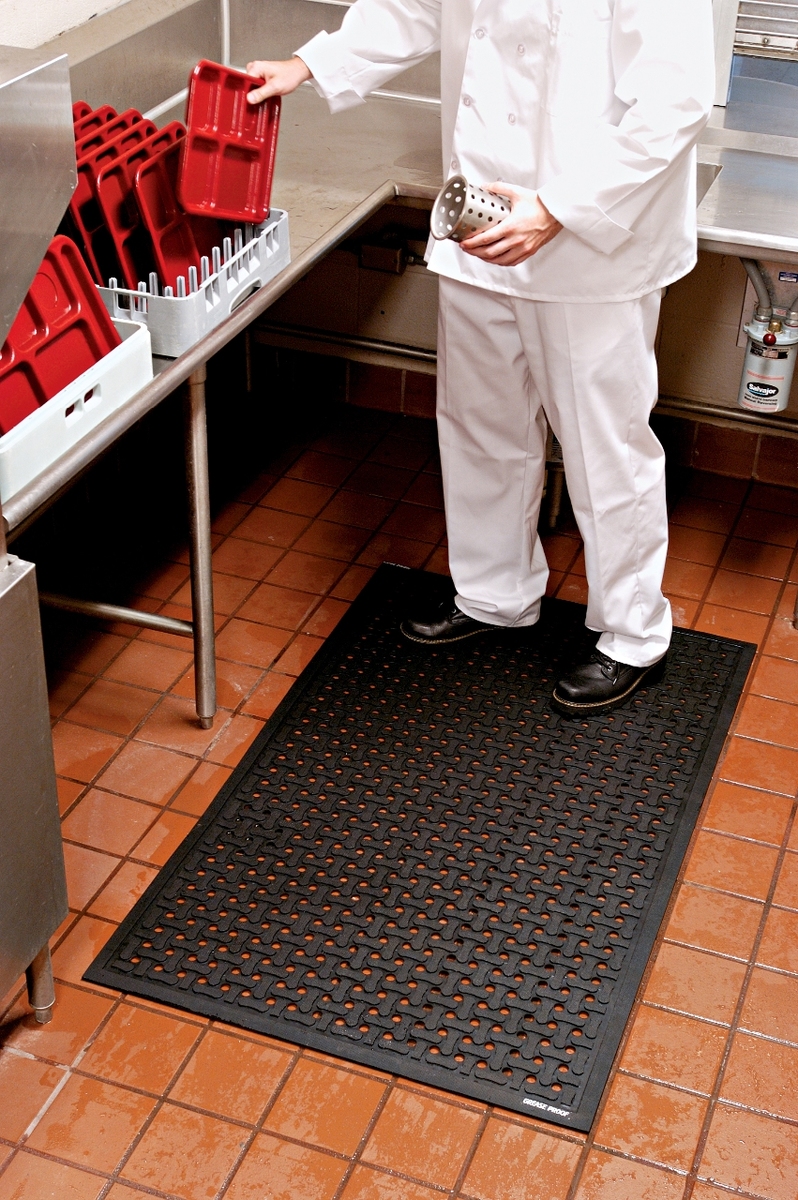Why choose an anti-fatigue mat?

All the wellness talk today is about “standing desks” and the need to get up and move around if you have a desk job that has you sitting much if the work day. However there are many workers that are on their feet all day to perform their job, so let’s consider the benefits of providing anti-fatigue mats for these workers.
At Cornell University, Ergonomists have long recognized that standing to work is more tiring than sitting to work. Standing requires 20% more energy than sitting and standing puts greater strain on the circulatory system and on the legs and feet.Prolonged standing at work increases the risks of varicose veins and according to scientific data, standing for long periods of time is particularly stressful and fatiguing.
The Canadian Centre for Occupational Health and Safety states many workers will experience discomfort, tiredness, sore feet, legs, knees or hips after long hours of standing. These are the combined effect of several factors, namely the design of the work, the workers' footwear, and the flooring material where they stand. Regardless of the quality of shoes and quality of the floor covering, standing itself can cause tiredness after an entire working day.
There are several factors to consider when determining ways to improve employee productivity and comfort. The type of flooring used in the workplace has an important influence on comfort, especially on tender feet. Hard, unyielding floors, like concrete, are the least comfortable surface to work on. Walking on a hard floor is similar to the impact of a hammer pounding the heel at every step. Wood, cork, carpeting, or rubber - anything that provides some elasticity - is generally gentler on workers' feet. More than that, softer floor coverings reduce fatigue and improve safety by reducing slips and falls on slippery floors.
Anti-fatigue mats can provide a solution however in choosing a mat a number of items need to be considered. First the thickness of the mat; softer and thicker may not always be better. Choose a mat that provides some elasticity, but at the same time is not so soft that a person feels they cannot stand comfortably.
Know the environment the mat will be used in.
- Mats should not slip, or create a trip hazard.
- Mats should have sloped edges (sloped edges are less of a trip hazard, and allows carts to roll over them more easily)
- Mats need to be kept clean. In areas, such as food preparation, maintaining cleanliness will be important.
- Mats should be anti-static
- Does the work area require a mat with holes that provides drainage for kitchens, locker rooms, food-processing areas, behind bars and in machine shops?
If you are unable to change the flooring and you wish to improve comfort for standing workers, for improved health, safety and productivity at your place business consider putting anti-fatigue mats to work for you.


